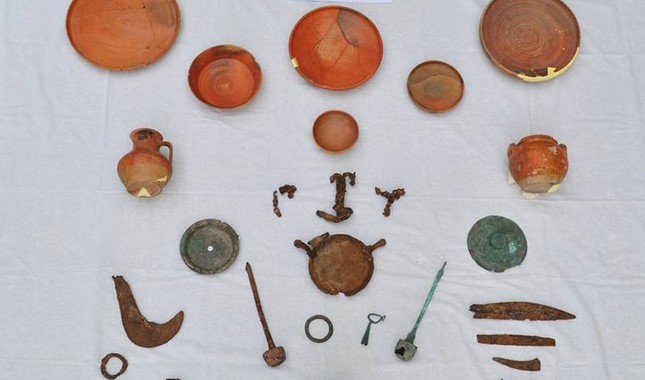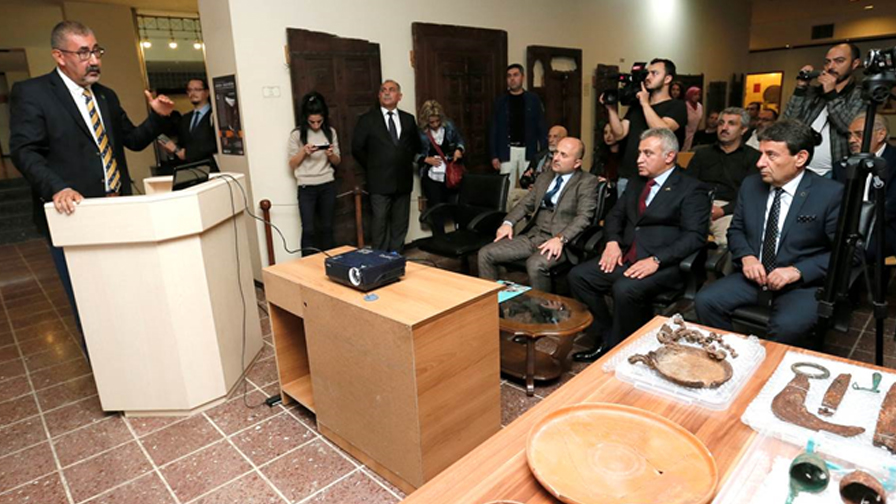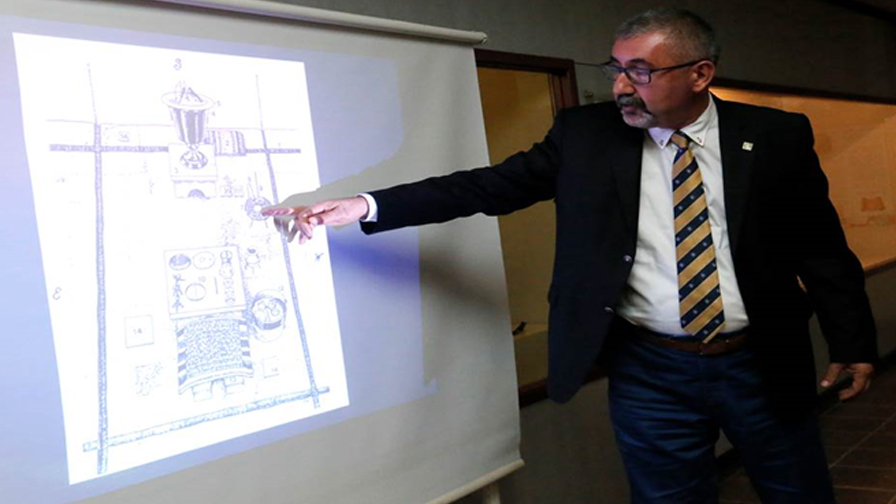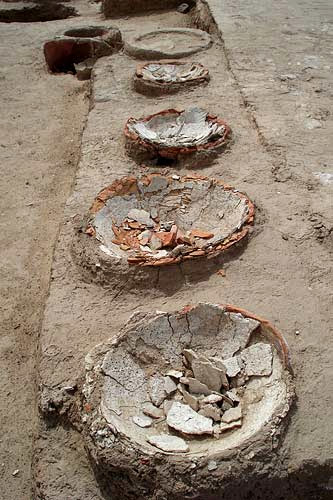The News report “Ancient Persian temple discovered in northern Turkey could rewrite Religious History” was originally provided on November 6, 2017 by the Daily Sabah News outlet based in Istanbul, Turkey. The text of the Daily Sabah report has been reproduced below with a number of edits. Included in the text below are also translated portions of the Turkish language Ana Haber Gazete News outlet. Kindly note that excepting one photo, all other images and captions do not appear in the original Daily Sabah report.
=====================================================================================
Archaeologists have uncovered an ancient Persian temple from the fifth century B.C. in Turkey’s northern Amasya province that could rewrite the history of the region. Istanbul University Archaeology Professor Şevket Dönmez has noted that the discoveries at the ancient Persian Oluz Höyük settlement in Toklucak village have the potential to change long-held notions of religion and culture in Anatolia.

Artifacts uncovered at the ancient Persian Oluz Höyük settlement in Toklucak village, Amasya province, Turkey (Daily Sabah & AA Photo).
As noted by Dönmez during a press conference regarding his excavations at Amasya (as cited/translated from the Turkish language Ana Haber News outlet):
“The excavations proceeded to explore the Persian (Achaemenid) time period (c. 425-300 BCE) at Asmaya… Oluz tumulus, where cella with sacred fire burned, living quarters, stone pavilions, and potholes where unusable temple goods were buried were discovered … the history of Anatolian religion now has to be revised … Portable fire burning vessels (fire) and skulls used in the temples were destroyed in the course of Alexander the Great’s Asian campaign (300 BCE). Shovels and pots pointing to Haoma (holy drink) were discovered. It is the first time that the ruins of Oluz mound, which reflects the formation and development periods of the Zoroastrian religion which are understood to have come to Anatolia with the Medes and the Persians. these finds are notably unique as he richness of these finds have yet to be found in Iran itself which is the Zoroastrian religion‘s geographical source.”
 Professor Şevket Dönmez of Istanbul University presents his findings at Asmaya, Turkey in a news conference followed by questions by Turkish academics and reporters (Source: Ana Haber). Note the Zoroastrian artifacts also on display at the lower right of the photo.
Professor Şevket Dönmez of Istanbul University presents his findings at Asmaya, Turkey in a news conference followed by questions by Turkish academics and reporters (Source: Ana Haber). Note the Zoroastrian artifacts also on display at the lower right of the photo.
In 11 seasons of excavations, the team uncovered thousands of artifacts, as well as temple structure. In respone to questions by the Anadolu news agency Dönmez noted:
“In this settlement from the fifth century B.C., we discovered a temple complex which is related to a fire culture, more precisely to the early Zoroastrian religion, or to the very original religious life of Anatolian people … They built a massive religion system here
[Asmaya]… No 2,500-year-old artifacts have been found in Iran, yet they appeared in Anatolia. [With this discovery] Anatolia has entered the sacred geography of today’s Zoroastrians”Zoroastrianism, one of the world’s oldest extant religions, is believed to have originated from the prophet Zoroaster in present-day Iran. The discovery of a temple for fire worship suggests the religion may also have had roots in Anatolia, as well.
Professor Şevket Dönmez of Istanbul University provides the architectural layout of the Zoroastrian temple that he and his archaeological team have excavated at Asmaya (Source: Ana Haber),
Describing the temple, Dönmez said it includes a holy room for burning fires and other stone-paved areas with many goods used in worship practices. Dönmez also said Oluz Höyük is the only known Persian settlement in the region.
Excavations at Oluz Höyük started in 2007, after the site was first discovered during surface research near Tokluca village in 1999.
Dönmez and his team plan to continue research work at the site, possibly working on restoring the temple area in the future.
Remains of ancient Zoroastrian urns at Gonnur Tappeh which were once filled with the sacred drink known as “Soma/Haoma” (Source: Balkh and Shambhala). Gonnur Tappeh is situated at approximately sixty kilometers north of Mary in modern-day Turkmenistan.





